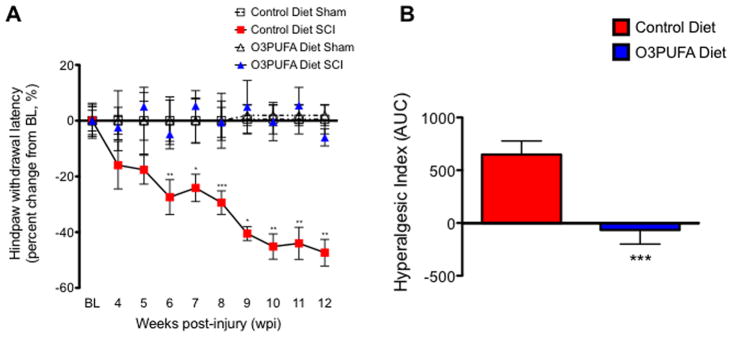Figure 1.

Responsiveness to thermal stimulation in animals receiving control and O3PUFA-enriched diets. (A) Thoracic contusion to the spinal cord leads to below-level thermal hyperalgesia in animals receiving control diets. Hindpaw withdrawal latencies (averaged percent change from baseline) are plotted versus time (weeks post-injury, wpi). For each timepoint, the individual latencies were adjusted to the percent change from baseline observed in sham animals receiving the same diet using equation 1 (see Materials and Methods section). No significant latency alterations were observed between sham animals. Notably, dietary O3PUFAs prevented the development of thermal hyperalgesia (p > 0.05 when compared to sham animals). TW-ANOVA identified the diet type and surgery as significant sources of variation [for diet/surgery F(3,49253) = 40.22, p = 0.0001, n = 8–18]. Bonferroni’s post hoc analyses showed significant thermal withdrawal latency changes when comparing injured animals receiving the different diet types (p < 0.05). (B) To investigate the overall effect of O3PUFA in thermal hindpaw sensitivities, the hyperalgesic index was generated using the area under the curve (AUC). Analyses of the AUC revealed that the O3PUFA diet had a significant antihyperalgesic effect (Mann Whitney U rank test; p < 0.001). Each bar represents mean ± SEM; n = 18.
